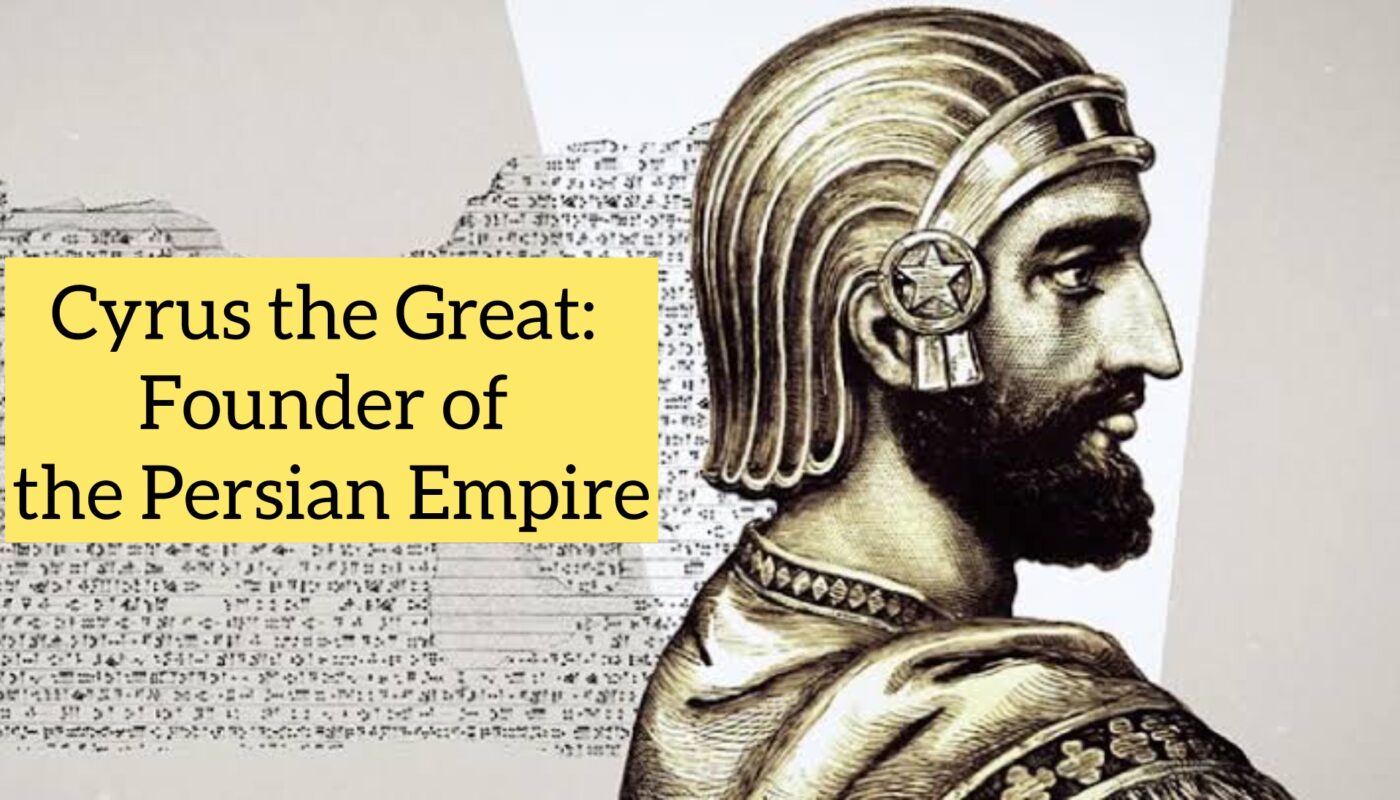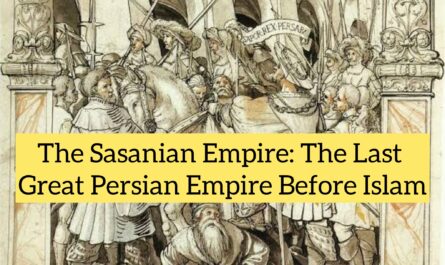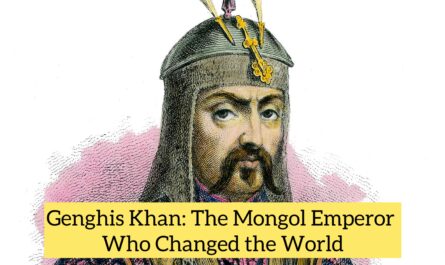Introduction
Cyrus the Great (c. 600–530 BCE), also known as Cyrus II, was the founder of the Achaemenid Empire, the first Persian Empire. Renowned for his military brilliance, political acumen, and enlightened rule, Cyrus is remembered not only as a conqueror but as a visionary leader who brought about profound changes to the ancient world. Under his leadership, Persia expanded into one of the largest empires in history, stretching from the Indus River in the east to the Aegean Sea in the west, encompassing much of the ancient Near East, including regions of modern-day Iran, Iraq, Turkey, Egypt, and Central Asia.
Cyrus’s reign, which lasted from 559 BCE to his death in 530 BCE, was marked by the innovative ways he governed, his respect for the cultures and religions of the lands he conquered, and his introduction of policies that promoted human rights and tolerance. He is also widely credited with the creation of the Cyrus Cylinder, often regarded as one of the first declarations of human rights.
Early Life and Background
Birth and Family
Cyrus was born around 600 BCE, likely in the ancient city of Anshan (in present-day Iran). He belonged to the Achaemenid family, a noble family within the Persian tribe of the Indo-Iranian peoples. His father, Cambyses I, was the king of Anshan, while his mother, Mandane, was the daughter of Astyages, the king of Media.
The exact details of his early life are shrouded in myth and legend, particularly regarding his birth. According to the famous ancient historian Herodotus, King Astyages of Media had a dream that his grandson would rise to challenge him. Fearing this, he ordered the infant Cyrus to be killed. However, the execution did not take place, and Cyrus was spared and raised in secret by a shepherd.
While these stories are rooted in legend, they symbolize Cyrus’s emergence as a figure destined for greatness. His early life was marked by both adversity and opportunity, laying the foundation for his later success as a ruler.
Rise to Power
Cyrus’s rise to power began in 550 BCE, when he led a revolt against his grandfather, Astyages, who had been a cruel and unpopular ruler of the Median Empire. According to legend, Cyrus gathered a coalition of disaffected Persian and Median nobles and led them in a rebellion. The decisive battle occurred near the city of Pasargadae (in present-day Iran), where Cyrus defeated Astyages’ forces and took control of the Median Empire.
The overthrow of Astyages marked the beginning of Cyrus’s expansion. After this victory, he took control of Media and absorbed it into the Persian sphere, unifying the two largest and most powerful tribes in the region.
The Rise of the Achaemenid Empire
Conquest of Lydia
Cyrus’s first major conquest after securing Media was the kingdom of Lydia in western Anatolia (modern-day Turkey). King Croesus of Lydia had long been a powerful figure, and he initially believed he could defeat the upstart Persian leader. However, Cyrus defeated Croesus decisively in the Battle of Thymbra around 547 BCE.
The conquest of Lydia was important for several reasons. It gave Cyrus control over the Lydian wealth, including Croesus’ famously rich treasury. The capture of the Lydian capital, Sardis, marked a key moment in Cyrus’s rise. This victory also demonstrated his military genius, particularly his use of psychological warfare, where he was known to have taken calculated risks and employed strategic alliances.
Conquest of Babylon
Perhaps Cyrus’s most famous conquest was that of Babylon, the capital of the ancient Babylonian Empire. In 539 BCE, after years of military campaigns, Cyrus successfully captured Babylon without much resistance. The Babylonian King Nabonidus had become unpopular, and the city opened its gates to Cyrus with little resistance. Herodotus claimed that the people of Babylon welcomed Cyrus as a liberator.
The conquest of Babylon was not just a military victory but also a significant political move. Instead of ruling through fear, Cyrus respected the Babylonian religious traditions and allowed the people to continue worshiping their gods, which earned him the loyalty of the Babylonian population.
Moreover, it is often said that Cyrus allowed the Jewish exiles in Babylon to return to their homeland in Judea. The Cyrus Cylinder, which was issued shortly after his conquest of Babylon, is sometimes regarded as the first declaration of human rights, as it granted religious freedom and the right to return home to many displaced peoples, including the Jews. This act of tolerance was one of the hallmarks of Cyrus’s reign and remains a defining element of his legacy.
Governance and Administration
Centralization of Power
While Cyrus was a conqueror, he also demonstrated remarkable administrative skills. He unified a vast and diverse empire, bringing together various peoples, cultures, and religions under one rule. One of his greatest strengths was his ability to balance central authority with respect for local customs. He set up a system of regional governors, called satraps, to oversee various parts of his empire, while maintaining a degree of autonomy for local rulers as long as they paid tribute and acknowledged his supremacy.
Cyrus was known for being merciful to his subjects, often sparing the lives of conquered rulers and allowing them to retain their positions as long as they pledged loyalty to him. This approach helped to prevent uprisings and maintain the stability of his vast empire.
The Cyrus Cylinder
The Cyrus Cylinder, often referred to as the first declaration of human rights, was issued by Cyrus after his conquest of Babylon. The text on the cylinder, written in Akkadian cuneiform, describes how Cyrus freed the people of Babylon from oppression, allowed them to return to their homelands, and restored their religious practices. It also speaks of his intention to create a peaceful and just empire that honored the diversity of its people. The Cyrus Cylinder is considered one of the most important artifacts in understanding Cyrus’s political philosophy.
The cylinder’s message of tolerance and inclusion was not just political; it was also a reflection of Cyrus’s broader worldview. His policies encouraged cultural exchange, allowing diverse populations to thrive under his rule. This focus on justice and respect for the traditions of conquered peoples was central to his success and set him apart from many other conquerors in history.
Military Organization and Strategy
Cyrus was a military genius, known for his innovative tactics and ability to lead his troops effectively. His army was composed of different units, including cavalry, archers, and infantry, which he used in coordinated strikes to overwhelm enemies. He was particularly adept at using the Persian cavalry, which became one of the most feared and effective military units in the ancient world.
His strategic thinking and ability to adapt to different terrains and situations made him a formidable adversary. Cyrus was also known for his use of psychological warfare, employing tactics to demoralize enemies before battles even began.
Death and Legacy
Death
Cyrus the Great died in 530 BCE during a campaign against the Massagetae, a nomadic tribe in the Central Asian steppes. The details of his death are unclear, but according to some accounts, he was killed in battle by the queen of the Massagetae, Tomyris, while others suggest that he died of wounds sustained during the conflict.
His son, Cambyses II, succeeded him, though his reign was marked by internal strife and a series of failed military campaigns.
Legacy
Cyrus’s legacy is vast and enduring. His creation of the Achaemenid Empire marked the beginning of a new era in the ancient world. Under his rule, Persia became a center of cultural and economic exchange, linking the East and West through trade routes such as the Silk Road.
His policies of religious tolerance, respect for local traditions, and humane treatment of conquered peoples set a precedent for later empires, including the Roman Empire and the Ottoman Empire. The Cyrus Cylinder, as well as his reputation for fairness and justice, earned him the admiration of both his subjects and future generations of rulers.
Cyrus’s empire would last for nearly two centuries after his death, eventually falling to Alexander the Great in the 4th century BCE, but his influence remained for centuries thereafter.
Conclusion
Cyrus the Great was a visionary leader whose remarkable achievements continue to resonate in the history of the ancient world. As the founder of the Achaemenid Empire, he demonstrated unparalleled military prowess, innovative governance, and a commitment to justice and religious tolerance. His legacy has shaped not only the history of Persia but also the broader course of world history, making him one of the most significant figures in antiquity.



